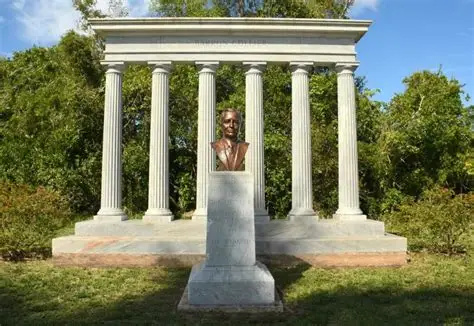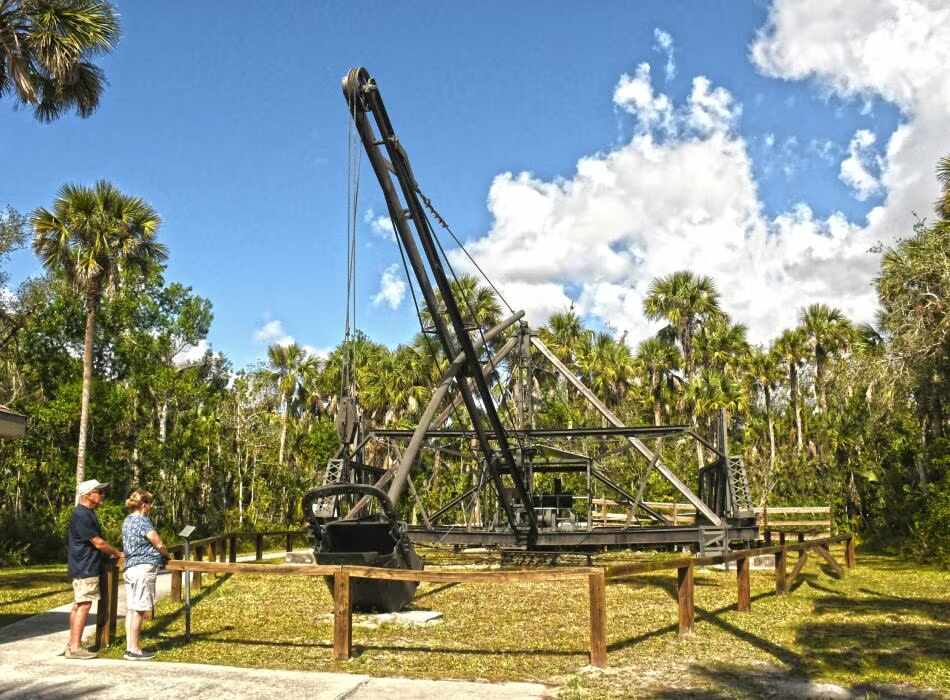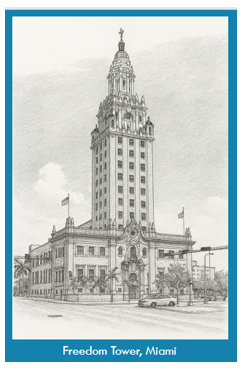- Home
- Florida History
- Florida Heritage Sites
- Collier-Seminole State Park
COLLIER-SEMINOLE STATE PARK
By Mike Miller November 25, 2025
OVERVIEW
Collier-Seminole State Park covers 7,271 acres in southwest Florida near Naples. It borders the Blackwater River and Ten Thousand Islands. This river is distinct from the river of the same name in Northwest Florida.
The park lies partly within the great mangrove swamp of South Florida, one of the largest mangrove swamps in the world. The park protects wildlife like panthers, black bears and manatees. Both alligators and crocodiles live in the park.
Canoe trails lead through the Everglades.
 Collier Memorial at Collier-Seminole State Park
Collier Memorial at Collier-Seminole State ParkThe park was originally created by Barron Collier to preserve the royal palms and was later donated to the state. It opened in 1947 and is part of the Great Florida Birding and Wildlife Trail.
HISTORICAL SIGNIFICANCE
Indigenous people used the area where the park is now located for centuries. They navigated the creeks, fished and hunted.
During the Third Seminole War, the Seminole retreated to the swamps of the Blackwater River and an area labeled “palm grove” on military maps.
That area is now part of the park and contains the beautiful royal palms as well as gumbo limbo, Jamaican dogwood and several fern varieties. While rare elsewhere in Florida, three original stands of royal palm are in the park.
Barron Gift Collier arrived in Florida in 1919. He bought nearly a million acres of land in southwest Florida. He funded the Tamiami Trail to link Tampa to Miami. The trail opened in 1928 and boosted tourism and trade. Collier died in 1939.
His family donated 3,500 acres for the park in 1945, including the land historically known as Royal Palm Hammock. The state added more land and opened the State Park in 1947.
A key artifact in the park is the last existing Bay City Walking Dredge, built in 1924 by Bay City Dredge Works of Bay City, Michigan.
It was used to dig the eastern section of the Tamiami Trail and "walked" on legs to move through muck. Its unique "walking" mechanism allowed it to move forward by lifting and shifting itself rather than relying on wheels or tracks.
This design was particularly suited for the soft, swampy terrain of the Everglades, where traditional equipment would struggle. While building the Tamiami trail, the walking dredge was operated six days a week by two men named Meece Ellis and Earl Ivey.
They alternated working 10-hour shifts each day running the machine in the sweltering heat with swarms of mosquitoes flying about and biting them.
The dredge was added to the U.S. National Register of Historic Places in 1997 for engineering and transportation significance. It’s a National Historic Mechanical Engineering Landmark.
The park area has also yielded some artifacts and evidence of past human activity, including ceramics such as fiber-tempered pottery.
The unusual aspect of the fiber-tempered pottery is the incorporation of Spanish moss fibers as a tempering agent.
This is an early and distinctive ceramic technology in Florida's archaeological record. The pottery is rare but has been found in scattered sites in the Everglades region, including around the park.
These finds reflect the historical presence of indigenous peoples like the Seminoles and possibly earlier inhabitants.
 Bay City Walking Dredge
Bay City Walking Dredgeat Collier-Seminole State Park
VISITING DETAILS
The park is at 20200 Tamiami Trail East, Naples, FL 34114. It lies 20 miles southeast of Naples on US-41. Reach it via Collier Boulevard to Tamiami Trail.
It’s open daily from 8 AM to sunset. The gates close at sundown. Parking lots are near the entrance. Get a map at the ranger station before starting your adventure.
Check out the new Butterfly Garden by the historic Blockhouse. You can rent a canoe at the park and paddle the 13.5-mile canoe trail through mangroves.
There are hiking/biking trails like the 3.4-mile loop through pine flatwoods and the short boardwalk to the dredge. Fishing from the boardwalk is another popular activity.
There are 120 camp sites with hookups. Campground sites have electricity, water, a grill and a picnic table. The restrooms have hot showers and there are laundry facilities available. A dump station is available for RV campers.
The park has 10 geocaches, including the Christmas Cache, the oldest in Florida.
There is a boat ramp to launch canoes or watercraft no larger than 24 feet. Stargazing events are often held at the park. Check their website for dates.
COLLIER-SEMINOLE STATE PARK WEBSITE
LOCATION MAP

Florida is the fastest-growing state in the United States and also the fastest-changing. If you see anything in this article that has changed or is in error, please let me know.
Thousands of Florida fans subscribe to our free daily Ezine, Florida Heritage Travel and we have 130,000 followers on Facebook.
By Mike Miller, Copyright 2009-2025
Florida-Back-Roads-Travel.com
Florida Back Roads Travel is not affiliated with or endorsed by Backroads, a California-based tour operator which arranges and conducts travel programs throughout the world.
